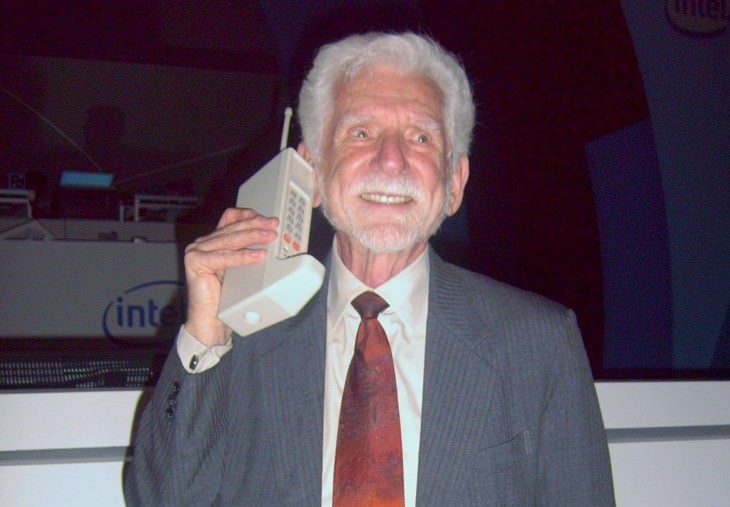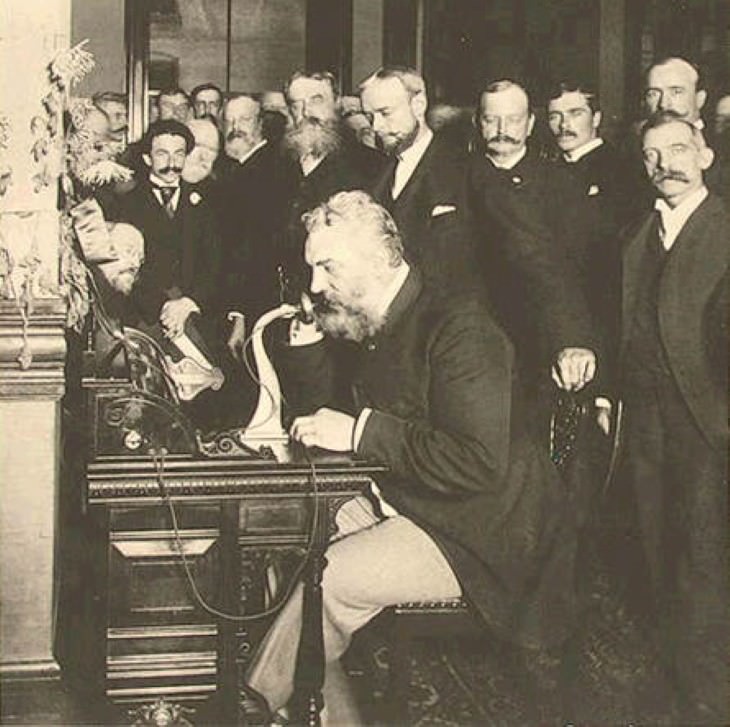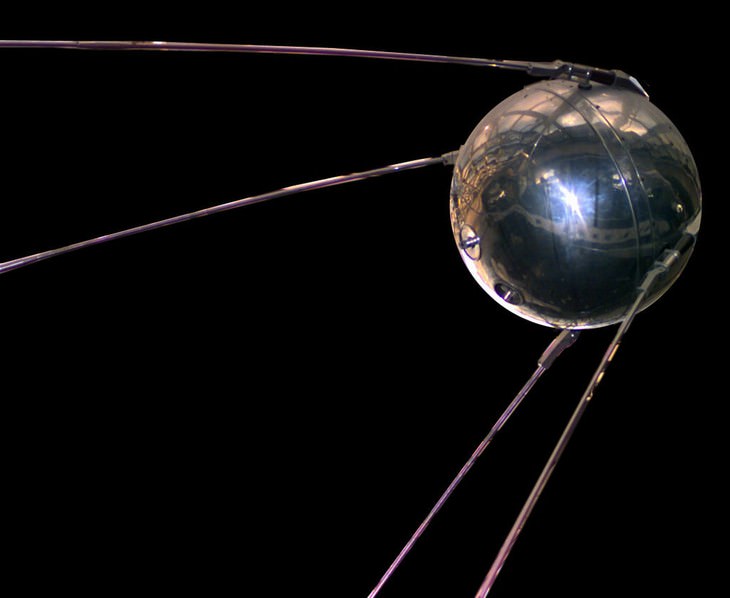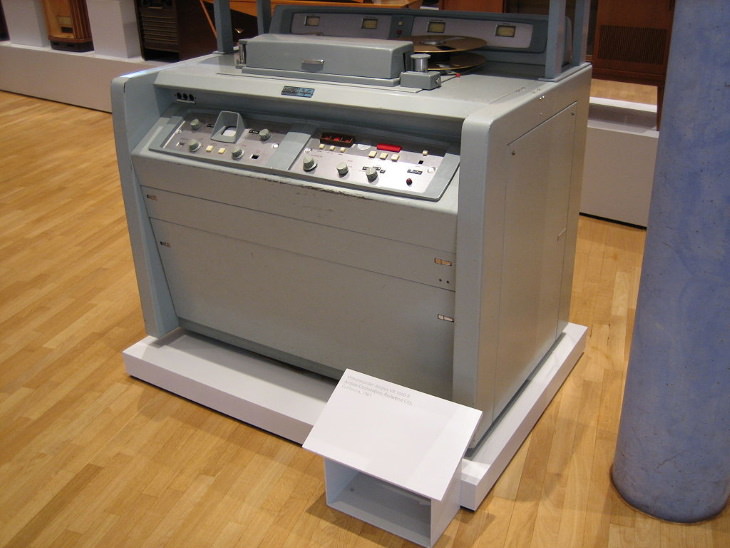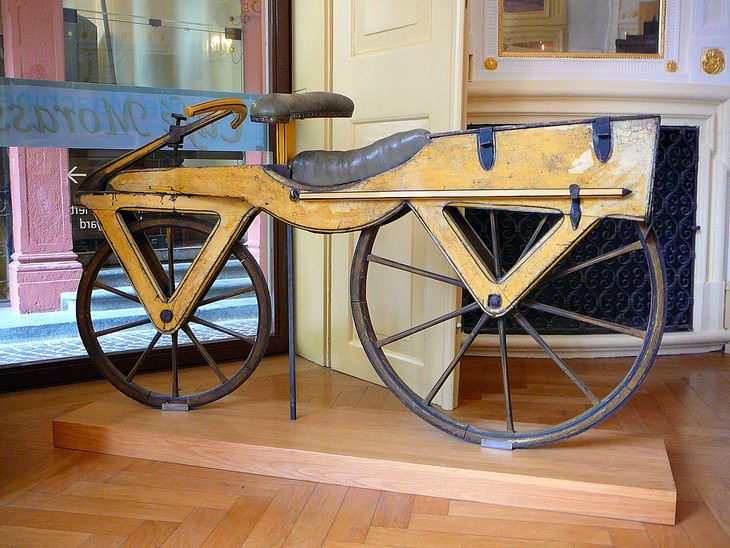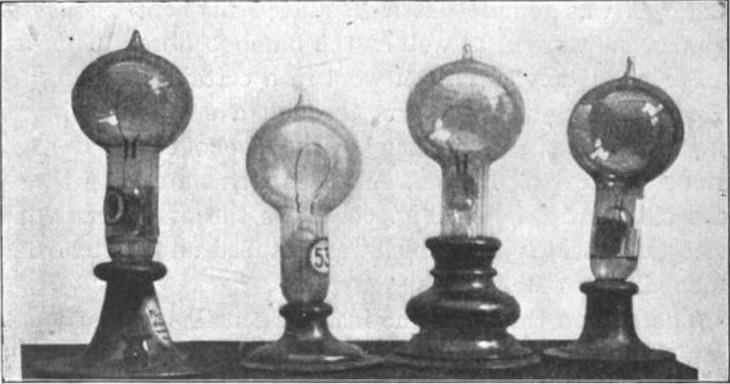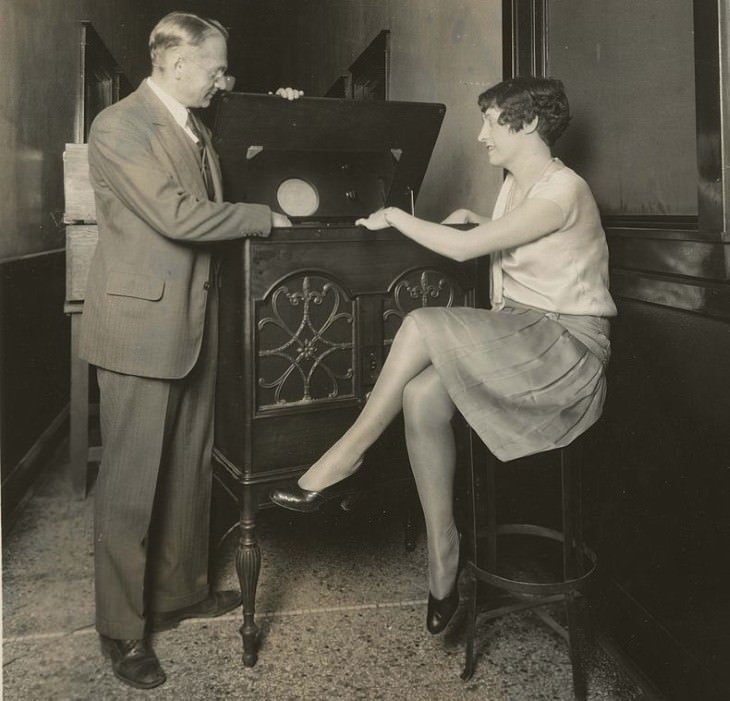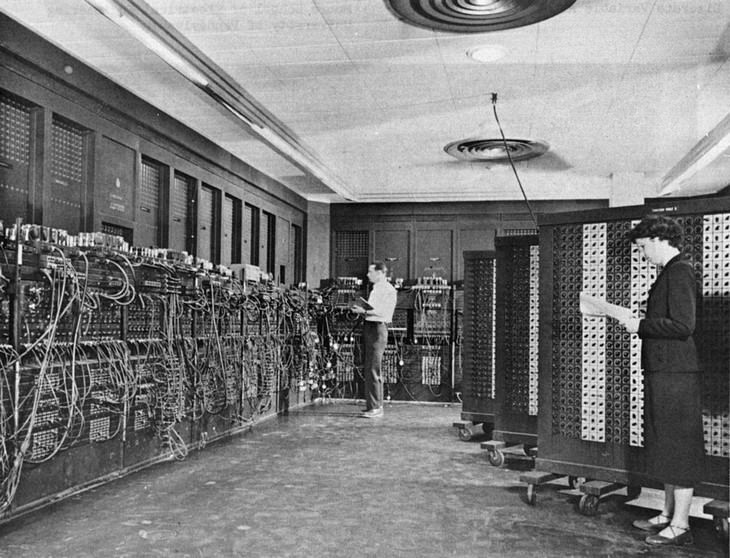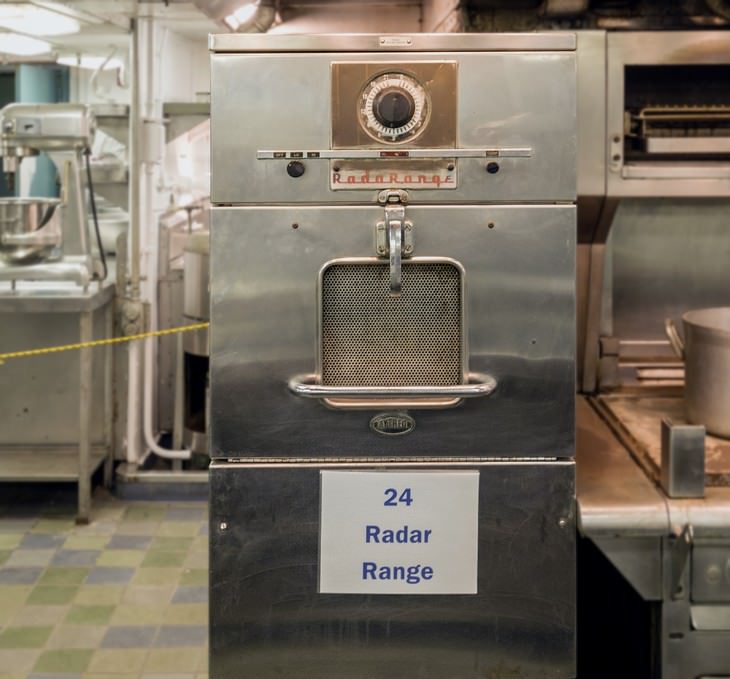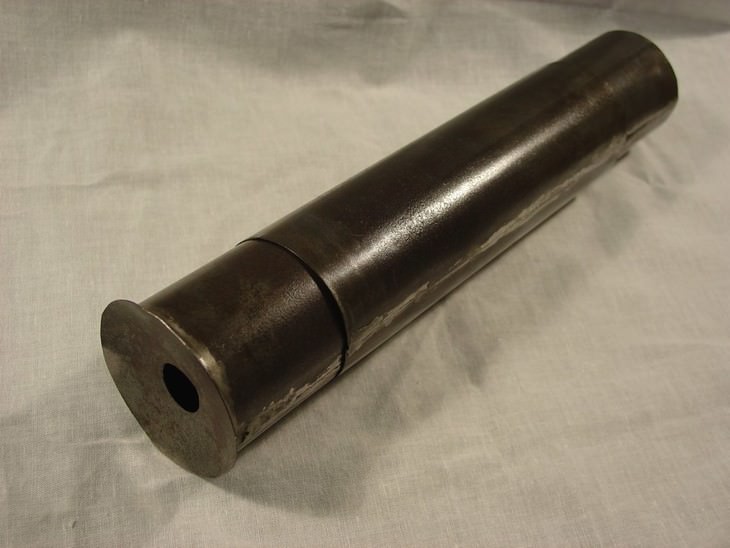Chances are, you’re reading this article right now from a smartphone, and handheld phones today are extremely small and lightweight, but do you remember the first prototype of a mobile phone? The first handheld phones were developed by Motorola in 1973, and the photo above shows Martin Cooper, an engineer who worked on the development of the first cell phone, the DynaTAC model by Motorola (also seen in the photograph).
This phone can hardly be called portable by modern standards, as it was approximately the size and weight of a brick and required a 10 hour charging period to offer no more than 30 minutes of talk time.
2. The Telephone
Further investigating the origins of the telephone, let’s go even further back in time, to 1892, to the moment when Alexander Graham Bell Bell placed the first New York to Chicago telephone call. Though the device you see in the picture doesn’t look particularly cumbersome, compared to modern smartphones, it’s a dinosaur. We recognize that Bell is not considered the definitive inventor of the telephone by many, but he was the first one to patent the device and to record the device itself on film.
3. Satellites
We can hardly imagine the world today without satellites, relying on the information they provide every time we use a navigation app or device when we watch TV or want to know the weather for tomorrow. There are nearly 2.000 operational satellites orbiting the Earth today, but until 1957, there were none. The image above depicts Sputnik 1, the Soviet satellite that was the first to orbit the Earth. Sputnik 1 stopped communicating and burned down in the Earth’s atmosphere only 21 days after the launch, but even today, satellites rarely last for more than 15 years in space.
4. The Video Tape Recorder
One could make the case that videotape recorders aren’t particularly widely used today anymore, but we decided to showcase the journey of this now nearly obsolete device, as it has been less than a century since its invention. The first videotape recorder was the Ampex, a picture of which you can see above. It was invented by Charles Ginsberg in 1951, and ultimately, Ampex received a whopping 12 Emmy awards for its novel technical video achievements.
5. The Bicycle
Early bikes, also often called "dandy horses", must've been awfully boring to ride. This early bicycle prototype is approximately from 1820, only 3 years after its invention in 1817 by Karl von Drais. These early models were made completely out of wood and lacked pedals and all the necessary mechanics to propel it forward in any way other than with your own feet.
6. The Lightbulb
Much like the invention of the telephone, the invention and commercialization of the light bulb were made possible by decades of research in physics, but the person to patent the first commercially viable light bulb was no other than Thomas Edison in 1879. The image above depicts a few of Edison's carbon filament lamps manufactured in the 1880s.
7. The Television Set
The invention of the television was also quite the scientific race, with several scientists worldwide working on the development of the device. Vladimir Zworykin, pictured above in 1929 with a prototype of the so-called kinescope, and Philo Farnsworth were among the first engineers to experiment with creating an electronic imaging device. The first commercially available TV sets were Octagon sets produced by General Electric, which was also the first broadcasting company.
8. The Computer
The first electronic computers were a view to behold, taking up massive amounts of space and having a tiny processing power compared to the smartphone you're likely holding in your hand right now, or any device you might be using to read this article, really. Photographed above is the world's first electronic computer, the American ENIAC (Electronic Numerical Integrator and Computer) that was completed in 1945. It was owned by the U.S. government and reportedly cost half a million U.S. dollars to construct. The device was primarily used to run calculations during World War II and those enabled the creation of the hydrogen bomb.
9. The Refrigerator
Modern refrigerators evolved from ice-boxes, which were cabinets filled with ice, but since the 1860s, the first commercial electric refrigerator technology appeared. These were called "Monitor-Tops" and were produced by General Electric, but the cooling systems of these early refrigerators contained highly toxic and flammable chemicals. Many of these units work to this day, but by the 1920s, on a commercial scale, they were replaced by freon refrigerators, like the 1927 Monitor model you see above. Of course, even these are highly inefficient by modern standards.
10. The Microwave
11. The Telescope
One of the few inventions on this list that actually didn't shrink, but actually got much bigger as it developed is the telescope. The first records about telescopes appeared in texts at the brink of the 17th century, with a Dutch inventor Zacharias Janssen arguably being the person to invent both the telescope and the microscope in 1590. Though this information is disputable, the photo above features a reproduction of one of these early telescopes created by Janssen. Needless to say, telescopes nowadays are far more than a couple of lenses fitted in a tube and can see far beyond the reaches of our galaxy.

